關於因果關係探究中的「中介變數」(intervening variables)與「調節變數」(moderators)
Published by 劉正山,
這是我這個週末自學的課題。愈學愈覺得學不完。但這個主題對政治學將會愈來愈重要(至少對實證主義而來說)。至少,目前國內的實證主義者,也很重視研究方法的進展,所以可以預期這個主題在五年內會得到國內做方法的政治學者的全面關注。
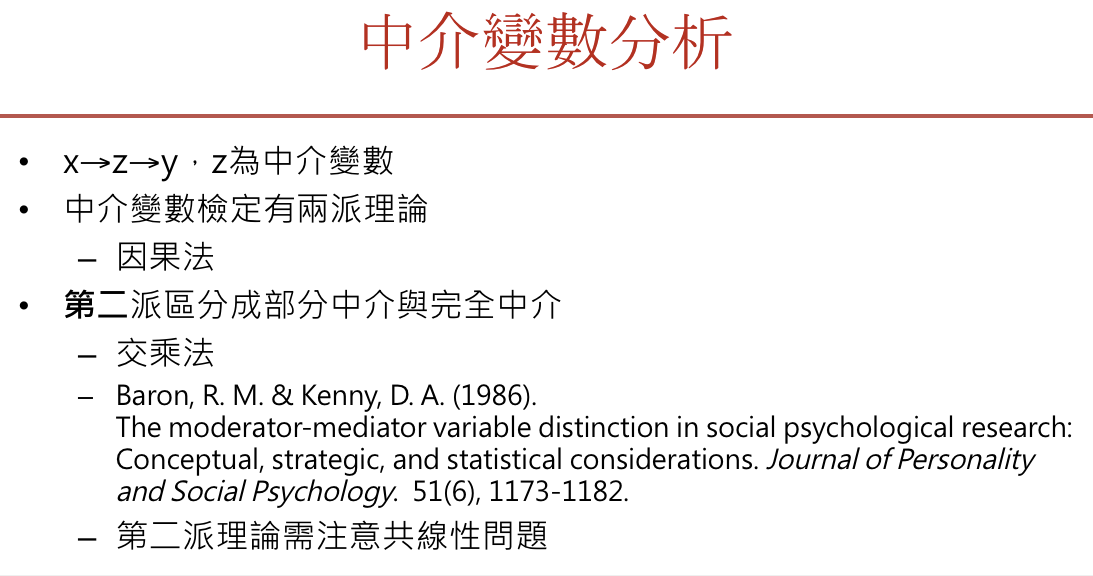

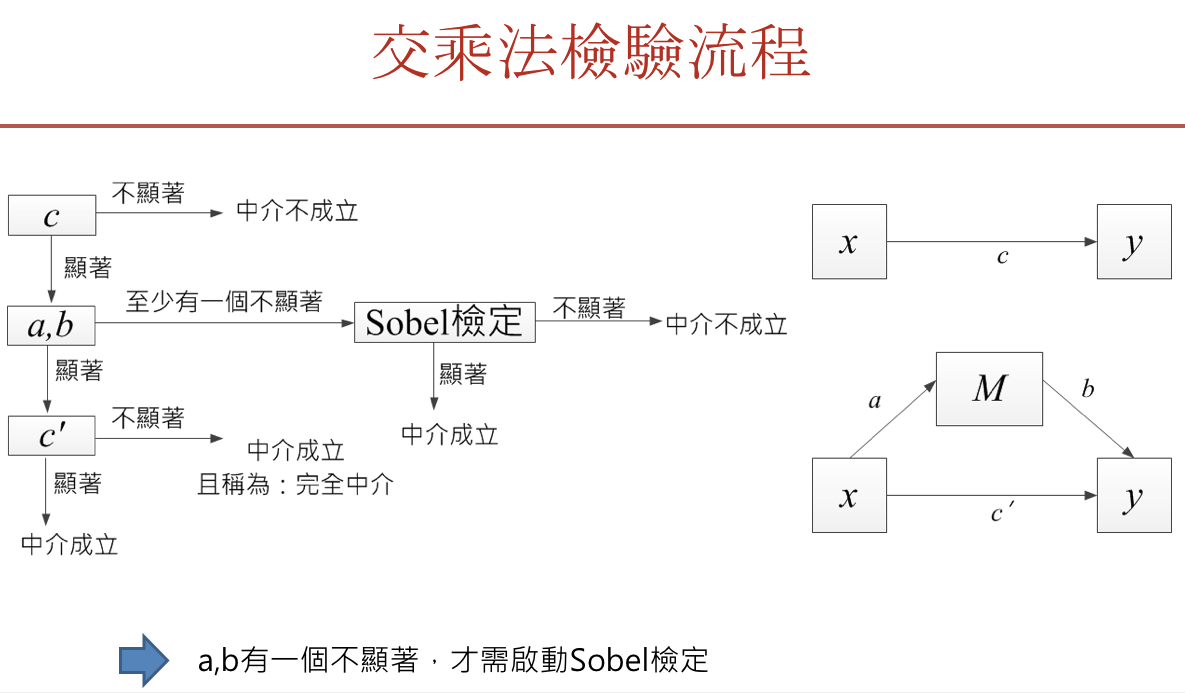
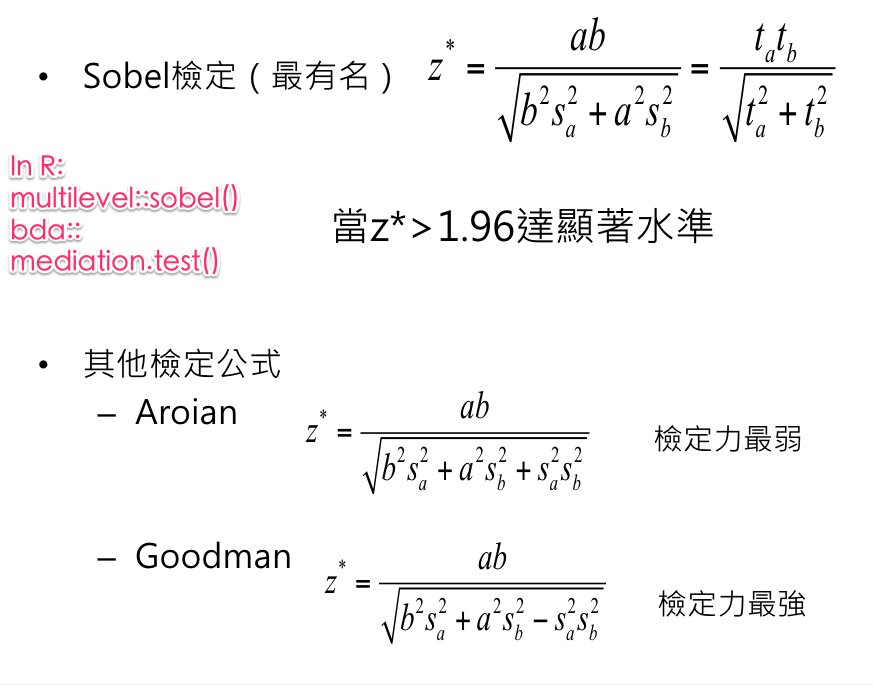
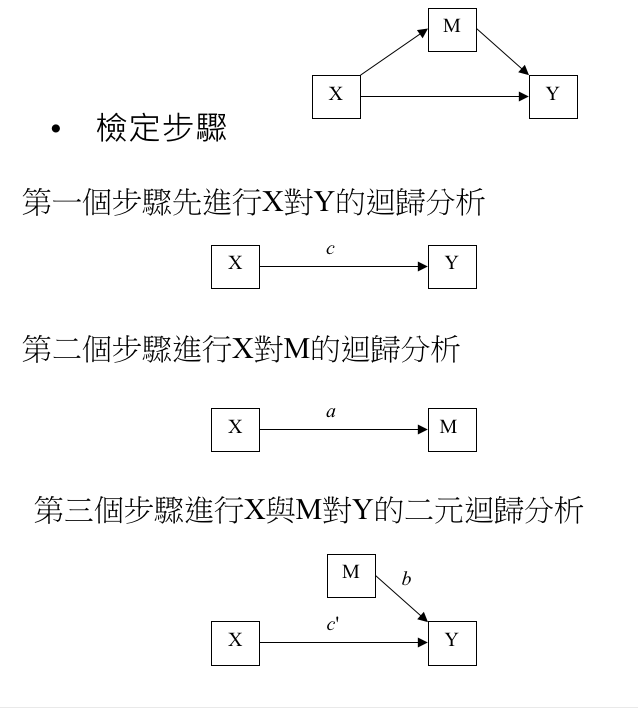
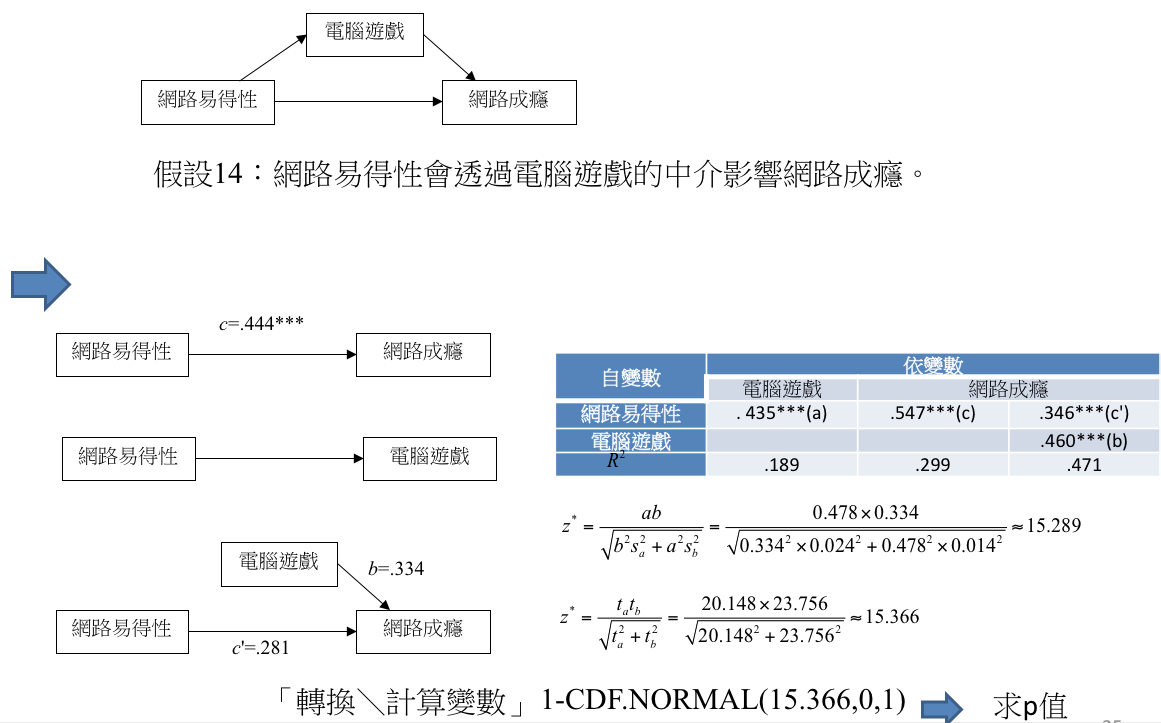
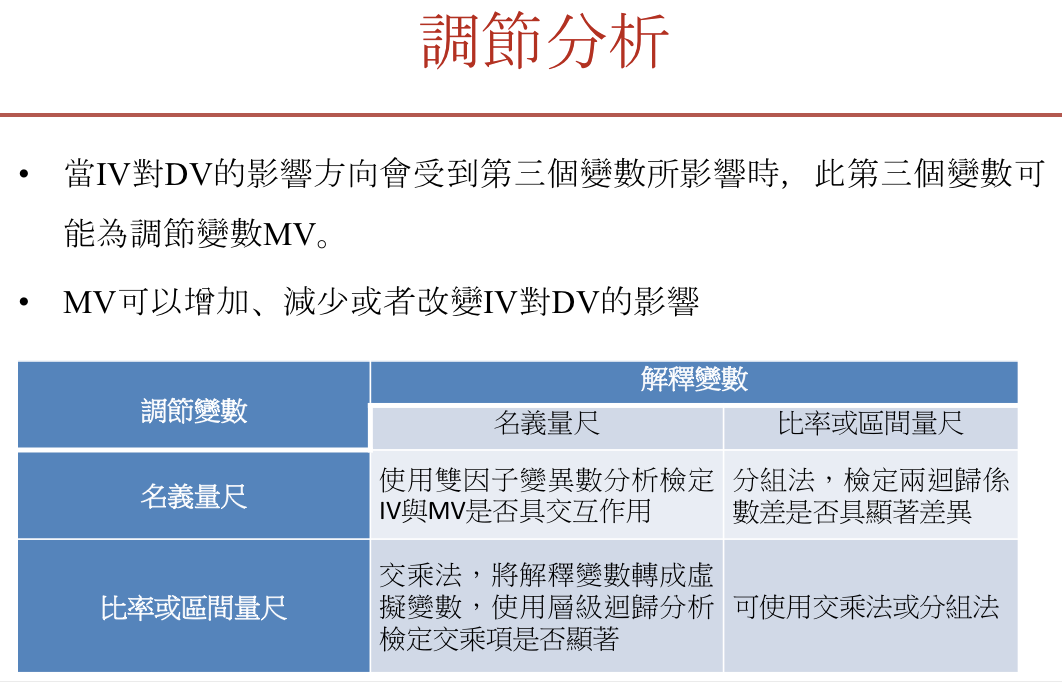
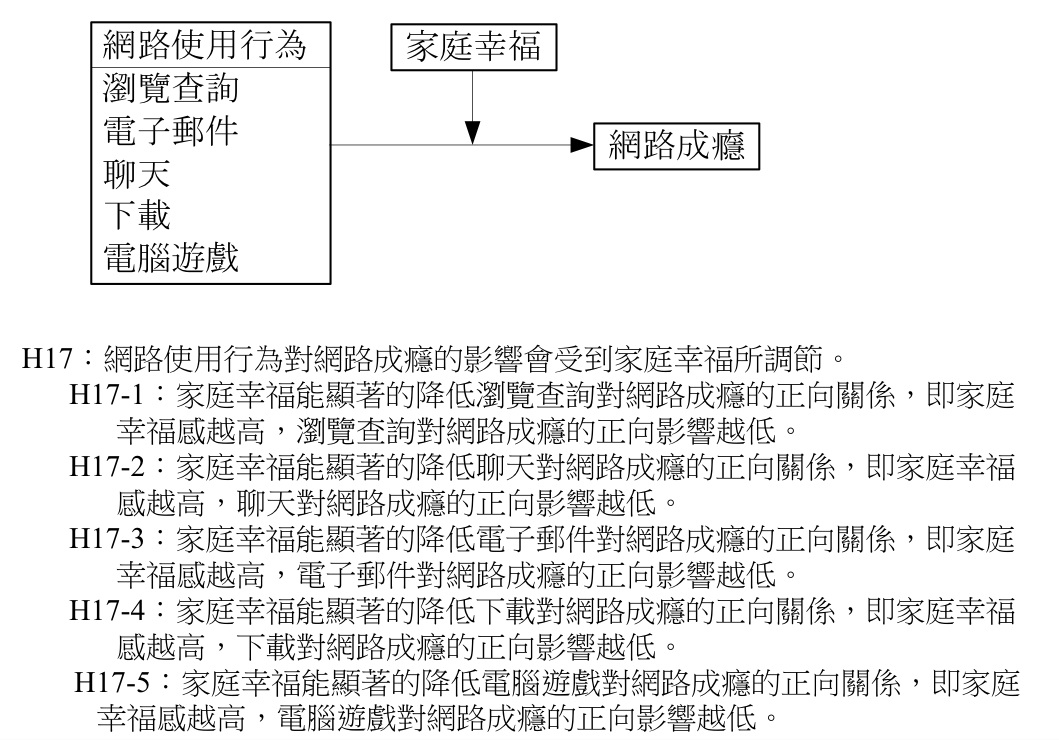 分組法
分組法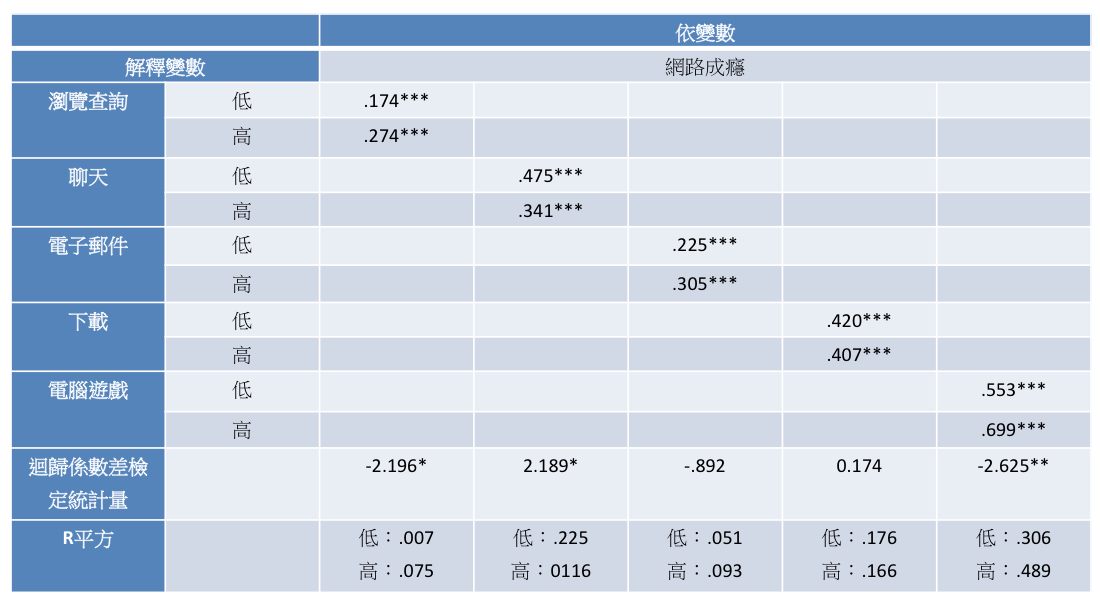 交乘法
交乘法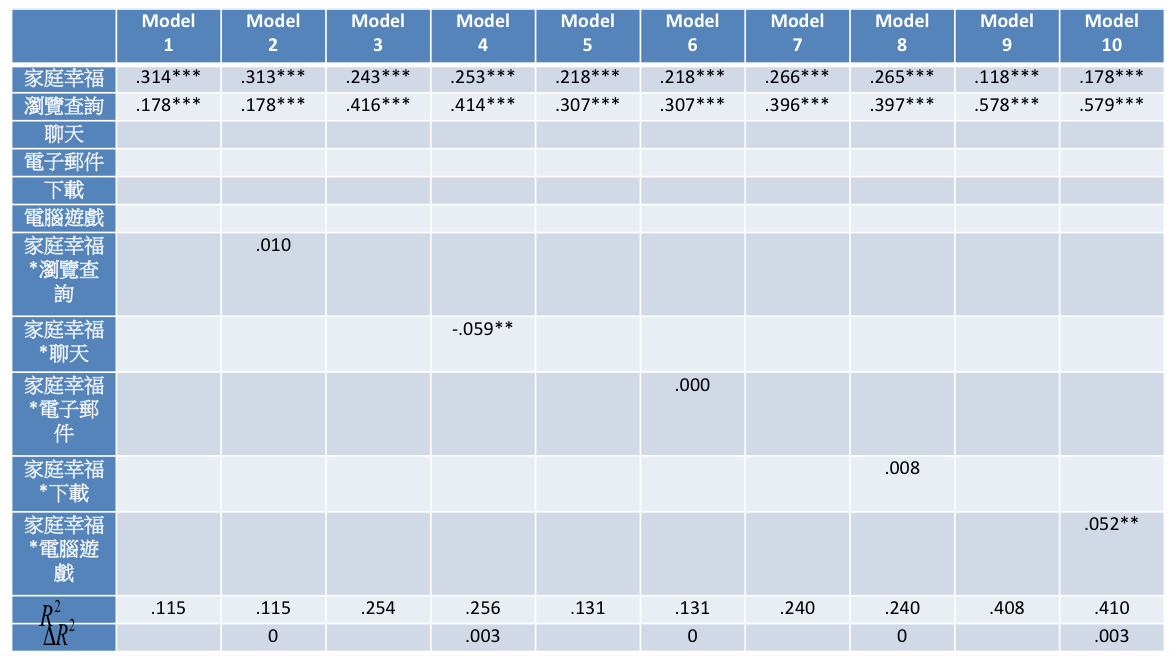
中介與調合的混合模型
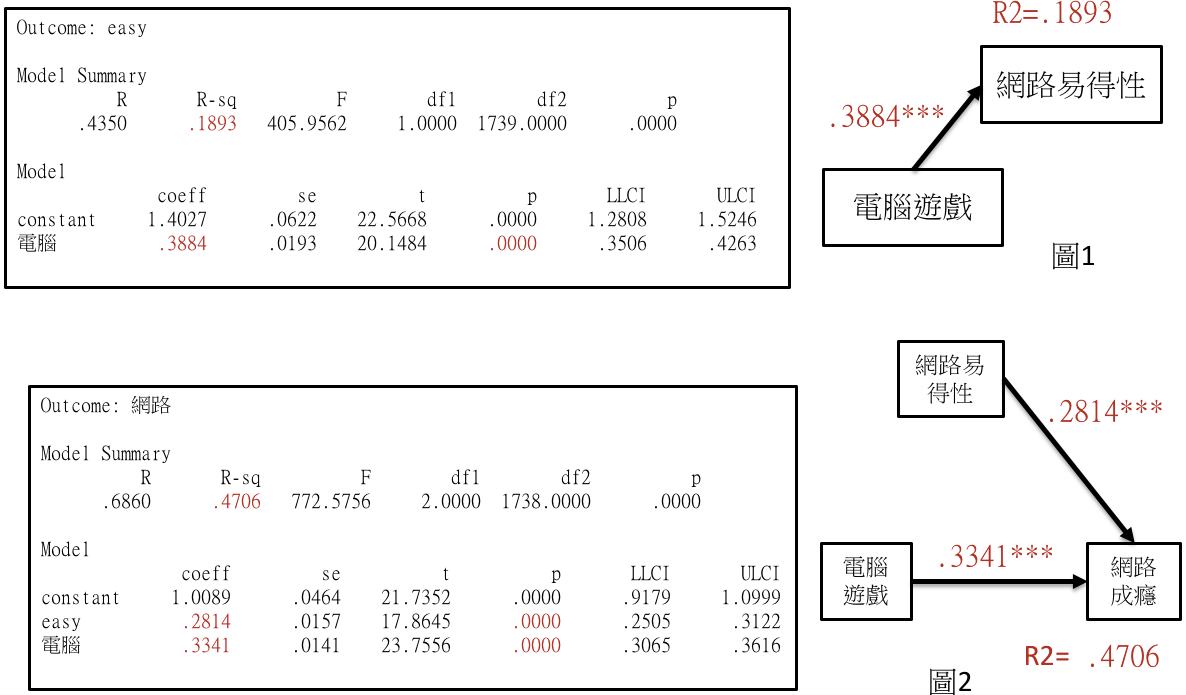
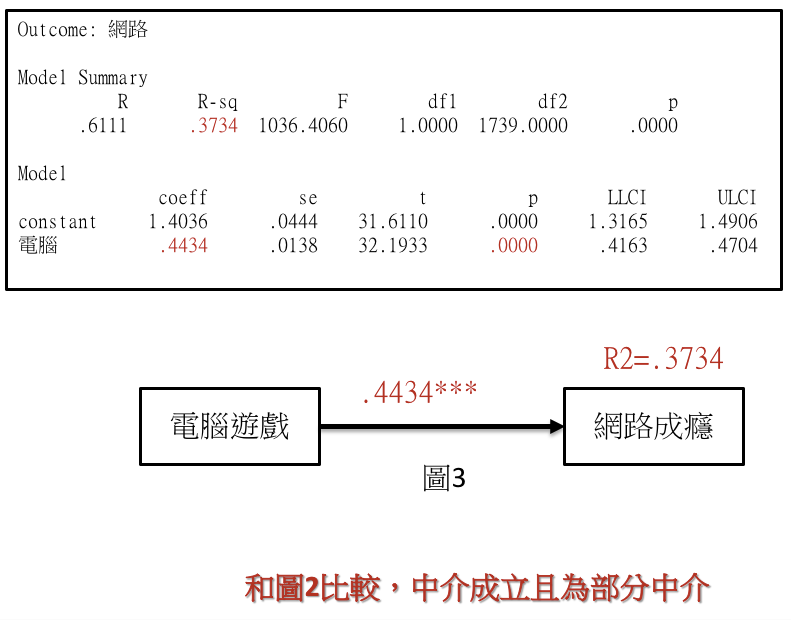
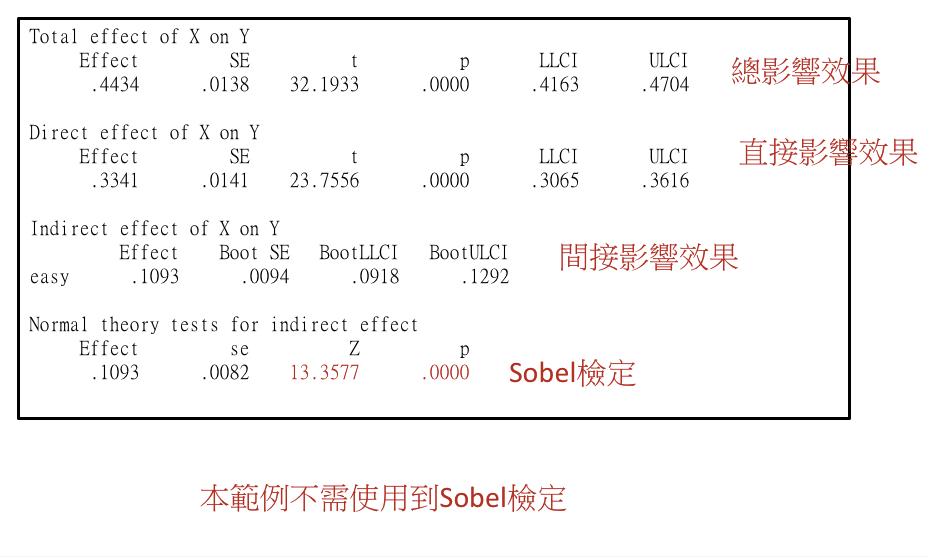
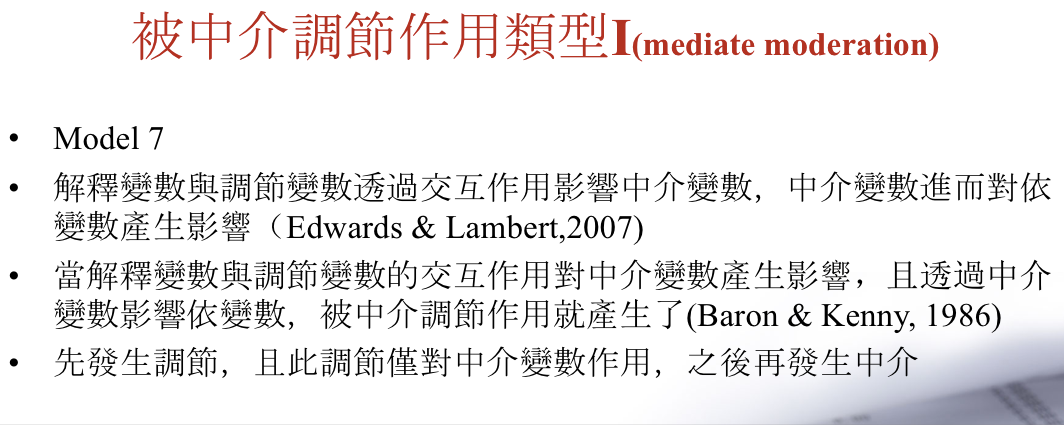
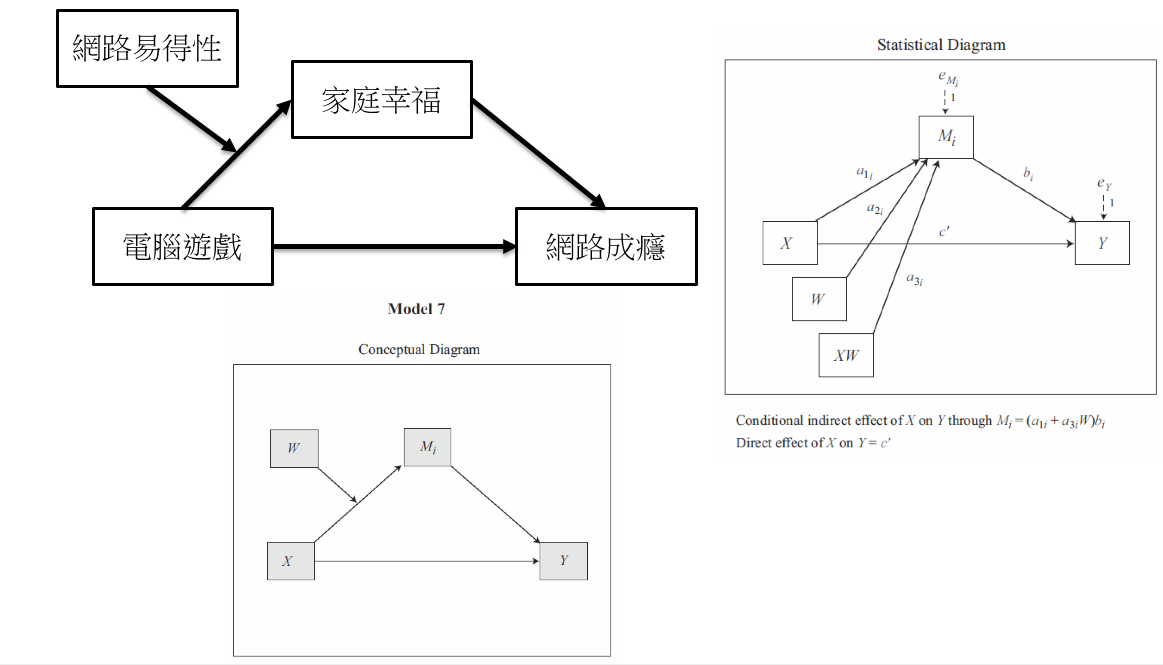
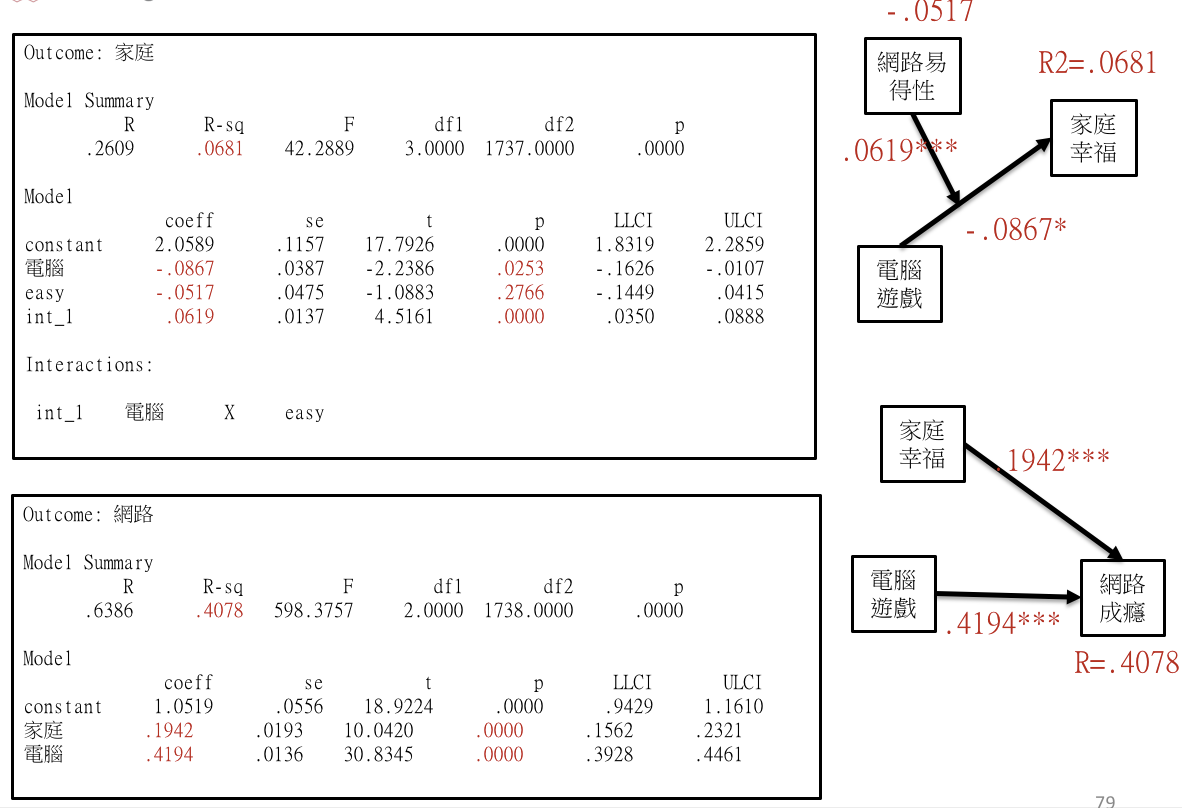
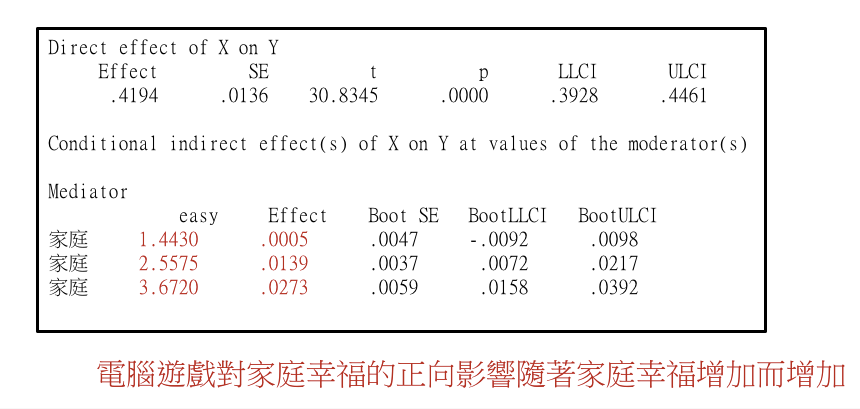
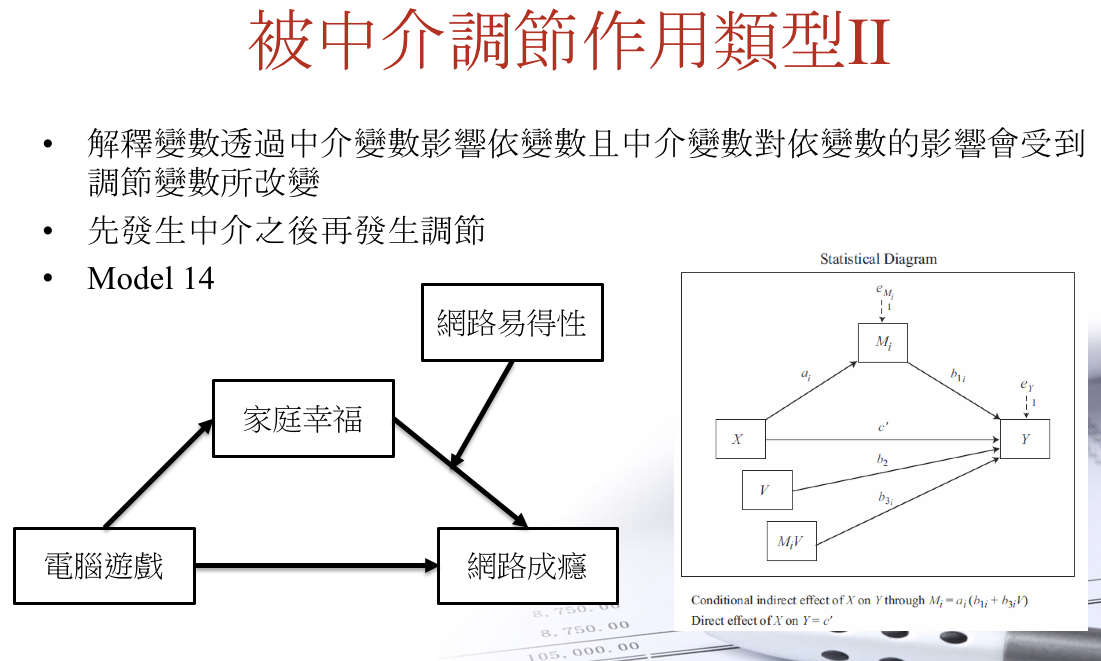
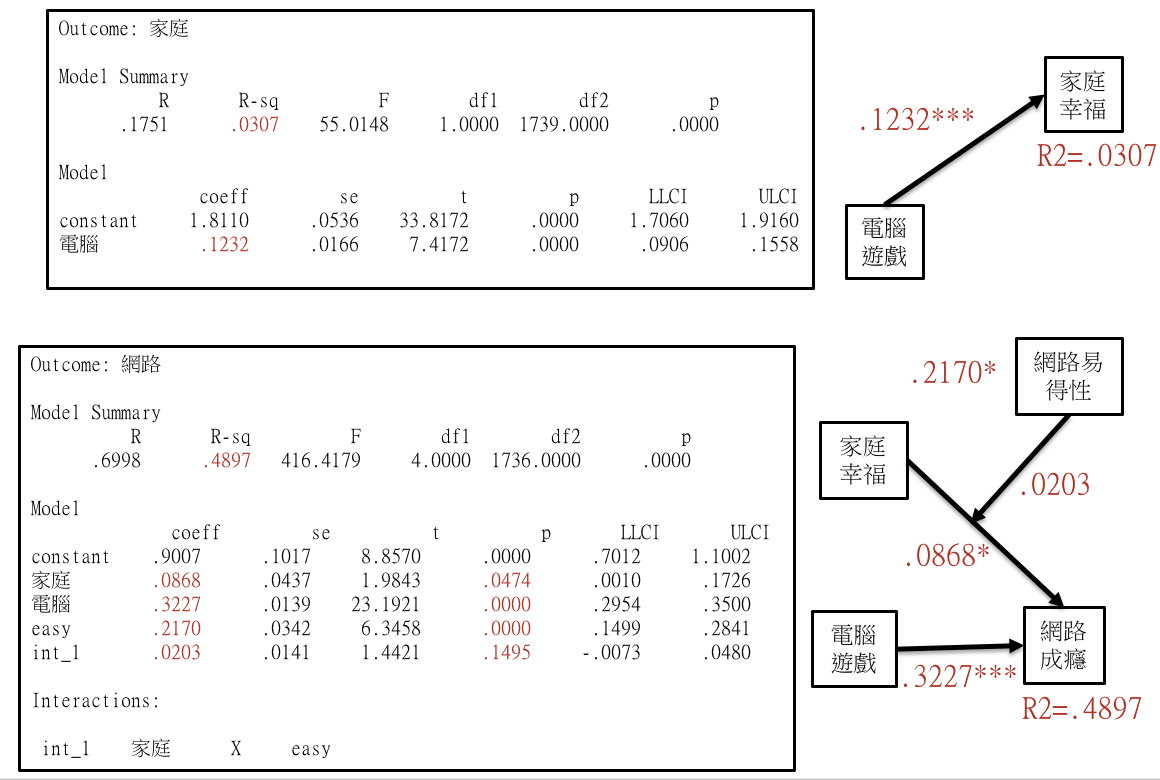
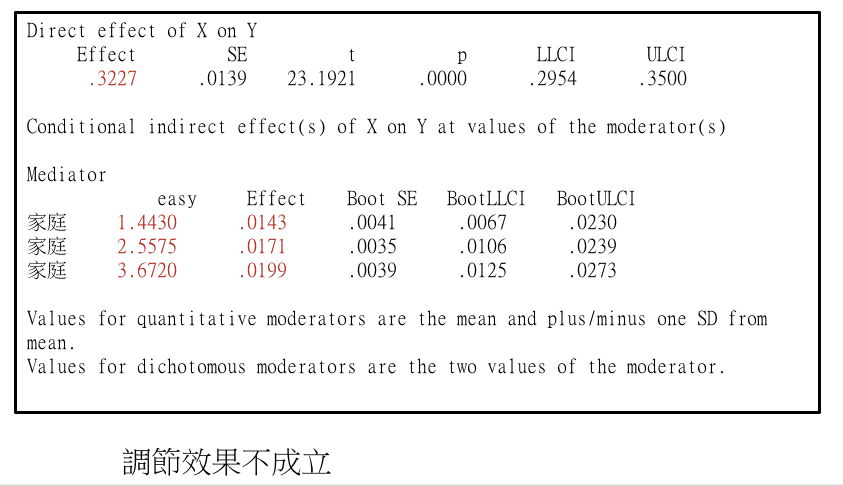
資料來源:
December 25, 2015 李德治 講於中山大學圖資處
展望:
簡單的模型,使用迴歸模型直接探究因果關係;較複雜的模型,使用SEM。
但是政治學不宜冒然使用模型前提預設很多的統計工具。
先看這一篇評估使用SEM進行中介/調節效果檢驗的文章:
VanderWeele, T. J. (2012). Invited commentary: Structural equation models and epidemiologic analysis. American Journal of Epidemiology, 176(7), 608–612. http://doi.org/10.1093/aje/kws213
並參考這個Mediation簡介網站作對照。
我們總是得確定SEM的定位及潛力之後再往前走。要嘛用SEM,要嘛用Tingley等人(2014)介紹的causal mediation analysis (CMA)
補充資訊:
- Hayes, A. (2013). Introduction to Mediation, Moderation, and Conditional Process Analysis: A Regression-Based Approach (1 edition). New York: The Guilford Press.
- http://www.afhayes.com/
- http://www.processmacro.org/papers.html
- UCLA’s SPSS Statistical Computing Workshop — Moderation and Mediation using the Process Macro http://www.ats.ucla.edu/stat/spss/seminars/process_macro/process_training.htm
- Estimate Sobel’s (1982) Test for Mediation in R
- 英文看不下去的話,這有早年中文的,也可參考: